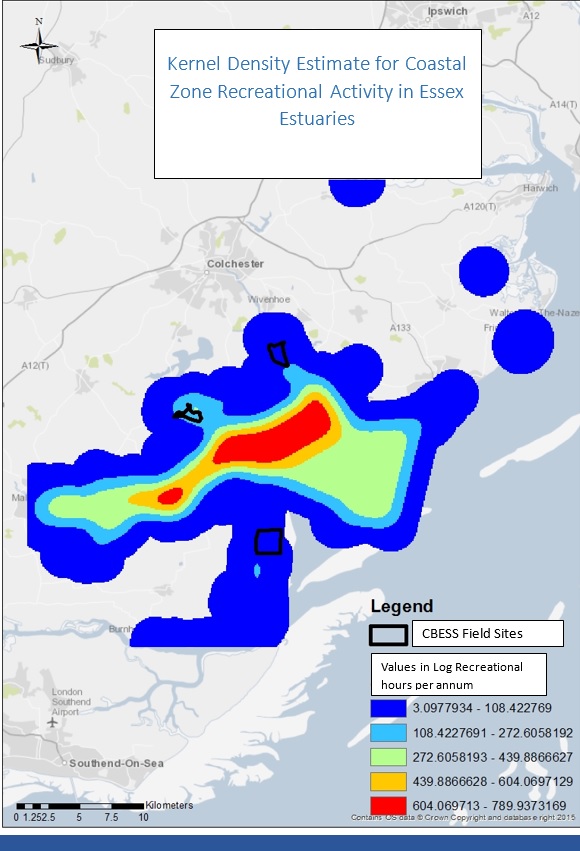Cultural benefits and recreation in the coastal zone: the valuable but awkward cousin in the Ecosystem Services Framework (ESF).
Within the CBESS research project, a small group of geographers and environmental economists, have been partnering with ecologists to quantify the relationships between living systems and recreation in the coastal zone. This is part of a broader aim of the project, to understand the delivery of ecosystem services at landscape scales in saltmarsh and mudflat habitats.
Cultural Ecosystem Services (CES) have often been considered the ‘awkward cousin’ in the ecosystem services framework. When researching the regulating services such as wave attenuation provided by a saltmarshes, or as nutrient cycling provided by a mudflats, we are seeking to explain phenomena which correspond respectively to the physics of wave energy or the chemical processes relating to nutrient fluxes. However, when considering CES, we are dealing with dynamics which seem to behave rather differently. How does aesthetic value of a habitats vary according to scale of perception? How does symbolic value of sunset across a shimmering mudflat vary according to cultural backgrounds?
In order to explore these issues, the CBESS team have used a range of research methods to understand the cultural benefits which arise from these ecosystems. Monetary (choice experiments), non-monetary (ranking in questionnaires and interviews), deliberative (interactive workshops), and spatial methods (mapping recreational activity) have been employed in two study site regions, Essex Estuaries and Morecambe Bay. The focus on recreation has been recently criticised in the wider literature on ecosystem services, as there are considered to be a wide range of other cultural benefits which are not often valued in ESF assessments. Yet a key finding of the UK National Ecosystem Assessment in 2011 was that recreation and tourism are very important for the UK coastal zone- tourism is proxy valued at £17 billion pa in seaside visits in Great Britain[1]. There is a lack of robust data on recreation in the coastal zone.
A headline interim finding of the CBESS project is that 1.2 million hours of recreational activity per annum are associated either directly or indirectly with these coastal habitats in Essex alone. The challenge remains to explain the interactions between ecology and society, and how biodiversity underpins these services. The figure below shows a heat map of 24 combined coastal zone recreational activities in Essex estuaries.
Dr Tim Stojanovic, University of St Andrews
[1] Jones, L., S. Angus, A. Cooper, P. Doody, M. Everard, A. Garbutt, P. Gilchrist, J. Hansom, R. Nicholls, K. Pye, N. Ravenscroft, S. Rees, P. Rhind and A. Whitehouse (2011). Chapter 11: Coastal Margins. UK National Ecosystem Assessment.

